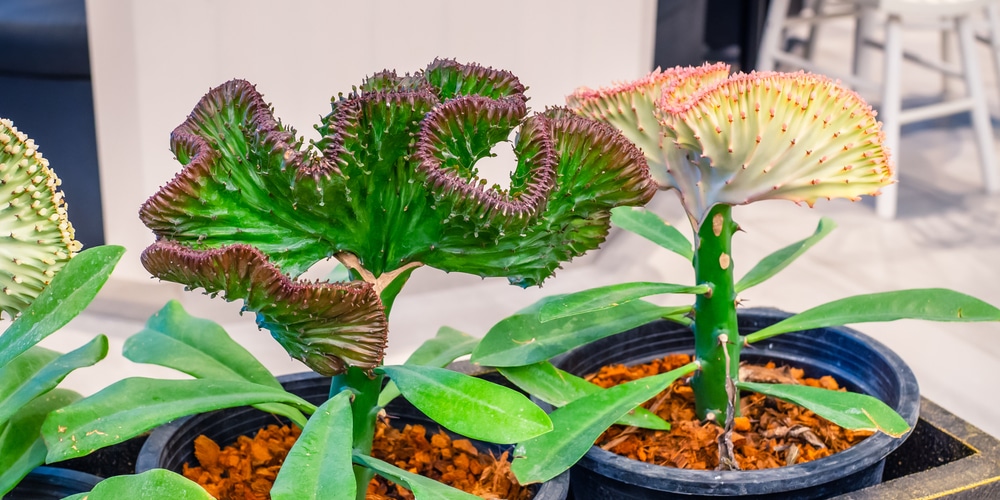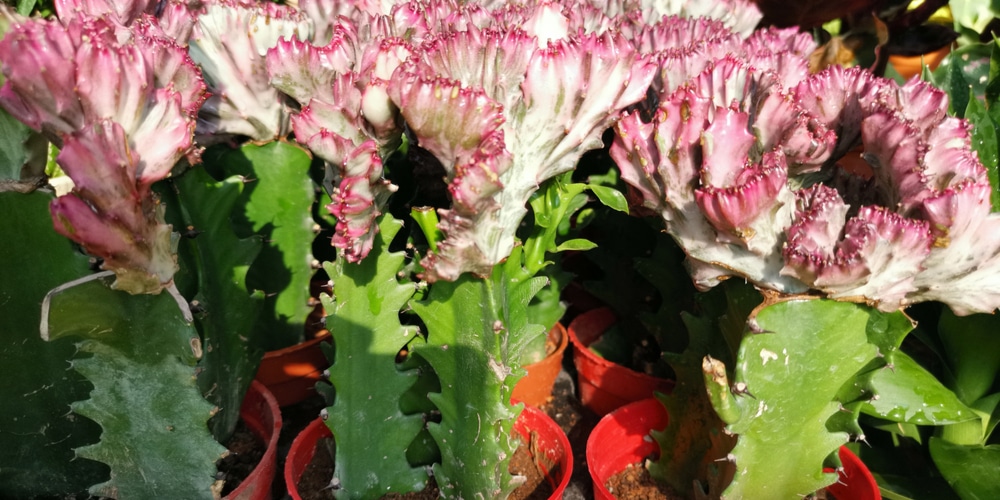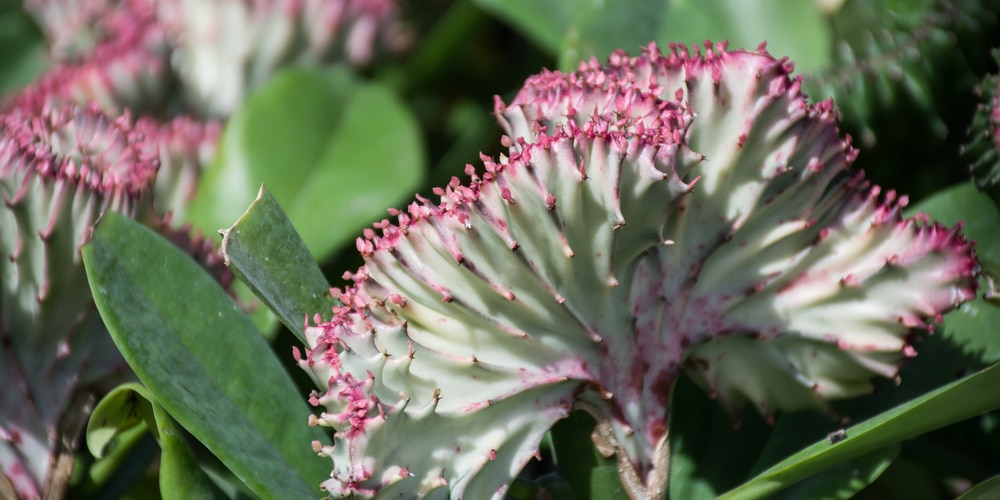The Euphorbia lactea, or Mottled spurge is an upright deciduous shrub with succulent branches that are similar to cacti.
| Botanical Name | Euphorbia lactea |
| Common Name | Mottled Spurge, False Cactus, Dragon Bones |
| Plant Type | Perennial |
| Flower Color | Short and small yellow-tinged flowers that fall quickly |
| Size When Mature | 180 inches |
| Bloom Time | Spring |
| Sun Requirements | Full Sun to Partial Shade |
| USDA Hardiness Zones | 10 and 11 |
| Soil PH Range | 6.1 to 7.8 |
| Soil Type | Sandy, well-drained |
| Water Needs | Low |
| Native Area | India, Sri Lanka |
What you Need to Know About Euphorbia Lactea
The E. Lactea, or Mottled Spurge, is a tropical succulent plant with cactus-like leaves and an upright growing habit. In the wild, Euphorbia Lactea can grow up to 15 feet tall but is tamed to just two feet (or 24 inches) as a houseplant.
The leafless shrub sports mottled branches and spiny stems that are dark green, sometimes with white stripes in the middle. The ends sometimes form a crested (or cristate form).
Potted e. Lactea plants don’t need too much attention, but it’s worth noting that the succulent is highly toxic to pets and humans. On rare occasions, small and insignificant flowers form and drop off just as quickly.
How to Care for Euphorbia Lactea
Here’s everything you need to know about growing and caring for a thriving Euphorbia Lactea
Light
The False Cactus is adaptable to a wide variety of lighting conditions that range from full sun to partial shade. You can grow the euphorbia lactea indoors and as a houseplant as long as it gets bright light or is placed in a sunny window.
However, too much direct sunlight can lead to damaged branches and leaves. If you’re growing the succulent outside then you should choose a location that gets shade in the afternoon.
Water and Soil Needs
The Dragon Bones plant can take any soil pH, but for optimal growth, you should put it in a slightly acidic and well-drained medium. Anywhere between 6.1 to 7.8 should be fine as long as the plant gets adequate drainage, and the soil is allowed to dry out between waterings.
The plant stores water in its fleshy branches or leaves, which means you won’t need to provide too much irrigation. You can treat it as a succulent and water only once a week or even less. Before you water, try and stick your finger an inch into the soil- if it’s still wet then you don’t need to water for another day or two.
The best soil mix is one where water passes through freely. You can put your euphorbia lactea in a cactus and succulent soil mix that can be bought in any gardening store or nursery.

Temperature Requirements
The Mottled Spurge grows well in tropical and subtropical regions. In the US, the plant thrives in zones 10 and 11. It’s worth noting that e. Lactea will not survive cold temperatures or any kind of frost or freeze. Bring the plant inside when temperatures are in the 30 to 35 degrees F range.
Fertilizer
The best fertilizer to use on a Euphorbia Lactea is one that’s low in nitrogen and given at half or quarter strength.
The succulent can use the nutrients in the soil faster if you feed it a liquid fertilizer. However, Mottled Spurge is prone to root burn caused by strong applications, so it’s best to dilute the feeding to about a fourth in the plant’s early stages, then half as it matures.
You can increase the frequency to once monthly but remember to give half the recommended feeding by the manufacturer.
Common Diseases
Although the e. Lactea grows easily in the right conditions, the plant can still be plagued by a number of pests and diseases.
Mealybugs and spider mites can build their homes in your succulent plant and leave telltale signs such as white, cotton-like nests and small webs. These problems can be treated with a spray of neem oil. Alternatively, you can dab diluted rubbing alcohol or insecticidal soap in the affected areas.
Powdery mildew and root rot are caused by constant overwatering and when the soil is too wet. Once you spot the signs, immediately take your Euphorbia Lactea out of the pot and allow the roots to dry for several days before repotting.
Euphorbia Lactea Propagation
The best way to multiply your mottled spurge is via cuttings or grafting. However, beginner gardeners and first-time dragon bone plant owners should take care in doing so since the succulent emits toxic sap when injured.
You can take a 5 to 7-inch cutting of a branch and try to root it by sticking the specimen in a succulent or cactus mix. You can dip the cutting in rooting powder and wait a month or until roots form.
Related Article: How to Identify and Save an Overwatered Succulent

